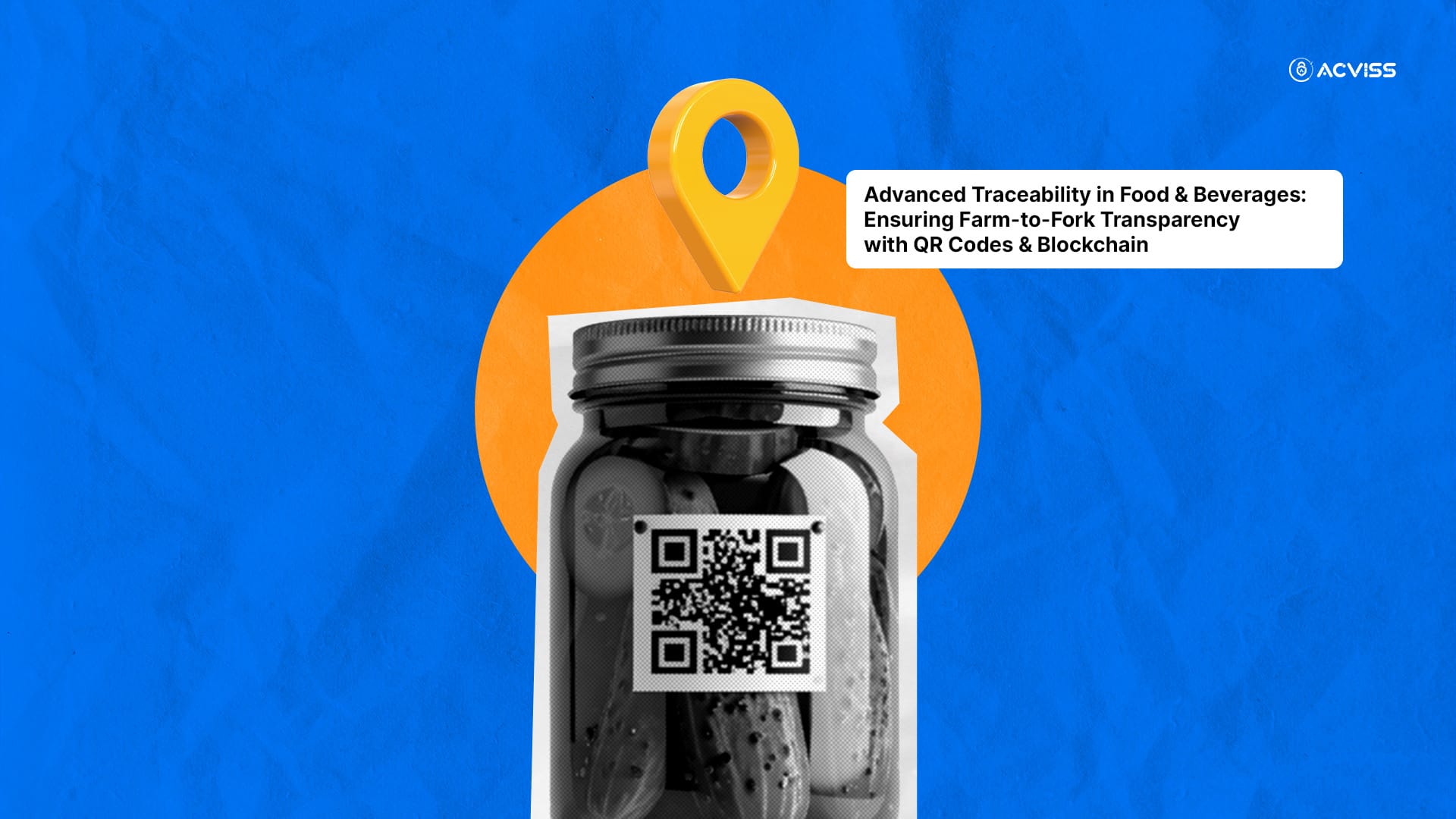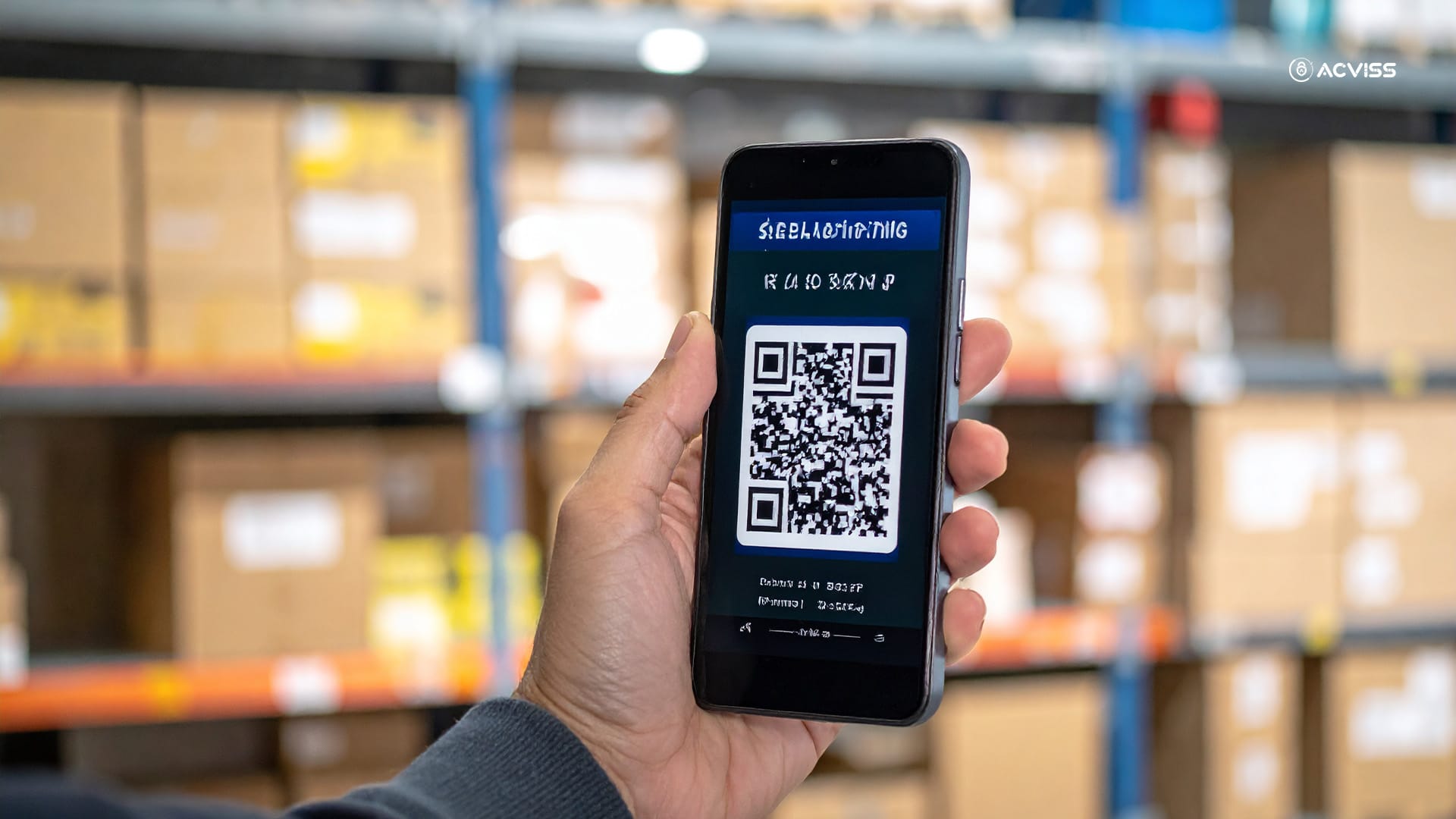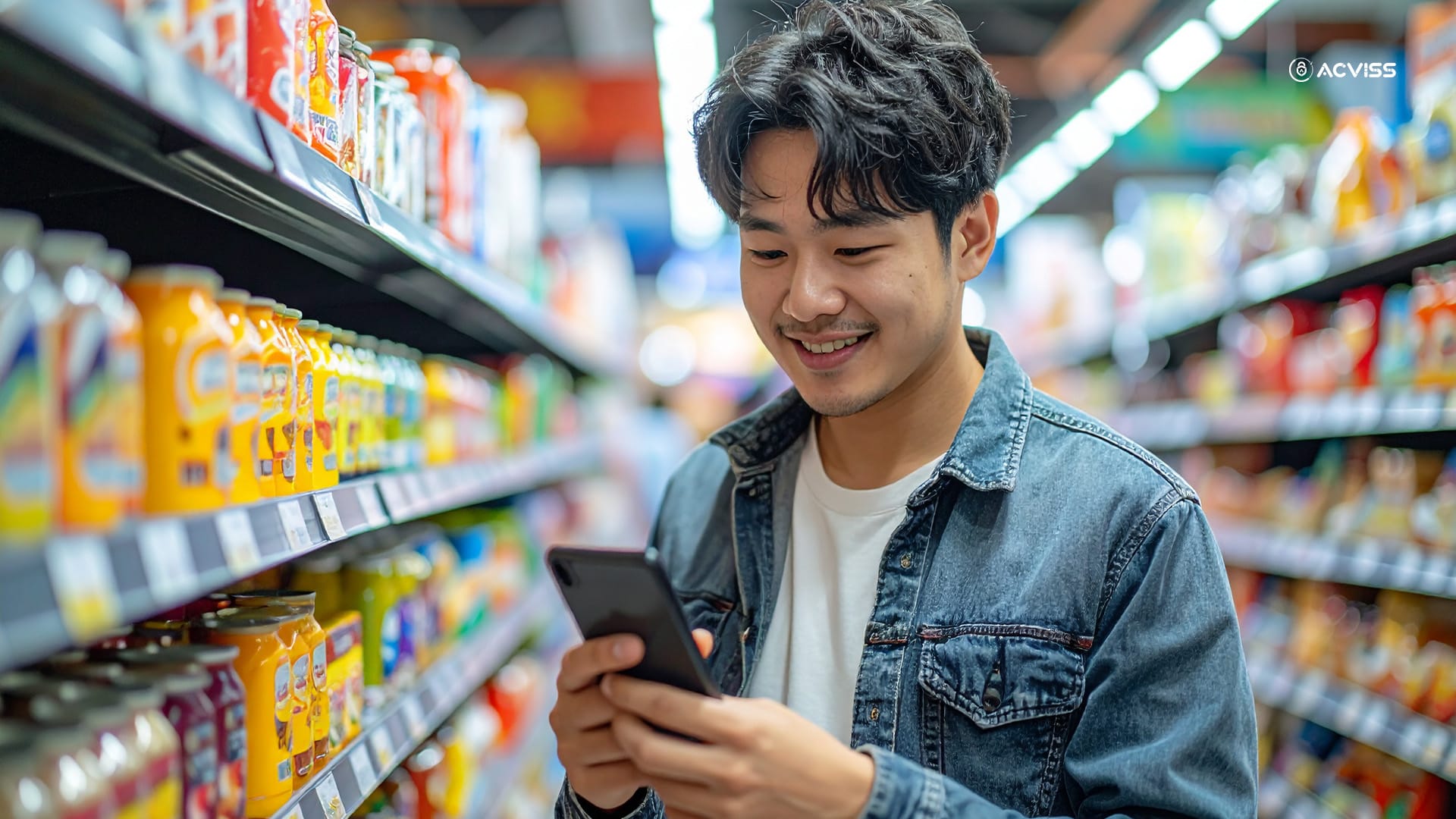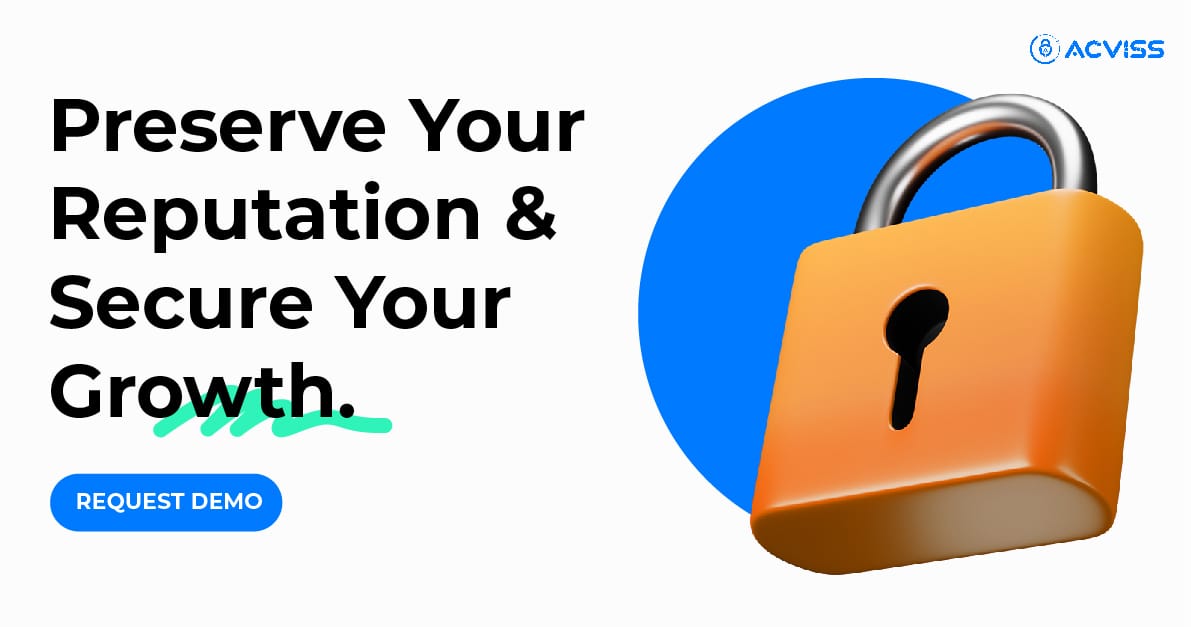Get Advanced Traceability in Food & Beverages with QR Codes & Blockchain

Let me ask you something: when was the last time you could tell a customer exactly where their product came from, every hand it passed through, and guarantee it wasn't tampered with? If you're in food and beverage manufacturing or exports, you already know this isn't just a nice-to-have anymore. Annually, 600 million people are affected by foodborne illnesses. Not just consumers, but businesses are affected by it too. Counterfeit food losses hit around $40 billion yearly, and this makes the food supply chain traceability a non-optional thing for survival.
The best and easiest way to tackle this is technology. The tools making this possible are QR product authentication, serialisation, and blockchain technology working together to create farm-to-fork transparency.
I'll walk you through how these technologies are solving real problems you face every day, from costly recalls to export rejections to brand-damaging counterfeits.
Why Food Supply Chain Traceability Matters More Than Ever
The numbers tell a scary story. Globally, 22% of food is adulterated, and India accounts for 28% of it. Fake honey, counterfeit olive oil, adulterated spices and a lot more. These don't just kill your reputation in the market but are also a health hazard.
Here are some challenges that keep F&B businesses up at night:
- Consumer Safety Risks: One contaminated batch can sicken thousands. Traditional tracking takes days to trace the source. By then, the damage is done, health-wise and publicity-wise.
- Recall Nightmares: Without precise tracking, you're forced into blanket recalls. That's $10 million per incident on average. Most of those recalled products? Perfectly safe. You just couldn't prove which batch was bad.
- Export Roadblocks: The EU now rejects 10% of imports for traceability gaps. The new EUDR regulations demand geolocated proof of origin by December 2025. US FSMA requires one-up, one-down tracing. Indian FSSAI is mandating QR serialisation for high-risk categories by 2026.
- Brand Damage from Fakes: About 30% of wine in some markets is counterfeit. Luxury food counterfeits cost the industry billions. When fakes bearing your label cause problems, your brand takes the hit.
If you could relate to even any one of these problems, stick to this blog and I will give you a full proof solution to this.
The old paper-based systems? They can't keep up. We need something smarter.
How Serialisation & QR Product Authentication Work Together

Think of serialisation as giving every product its own digital fingerprint. Instead of just knowing you made 10,000 bottles of juice, you know exactly where each bottle is, where it's been, and who handled it.
Here's how it works in practice:
Unique Identifiers for Everything: Serialisation assigns unique codes, usually following GS1 GTIN standards, to individual units, batches, and pallets. It's like a family tree for your products. One pallet code links to multiple case codes, which link to individual bottle codes.
QR Codes Bridge Physical and Digital: Those serialisation codes get encoded into scannable QR codes on your packaging. Anyone with a smartphone can scan and instantly see:
- Where the product originated
- Processing and handling dates
- Certifications and safety tests
- Cold chain compliance
The Authentication Part: When consumers, retailers, or customs officials scan that QR code, they're querying your database. Real product? The data matches. Counterfeit? No record exists, or the data doesn't align.
But there's one more issue with this. Basic QR codes can be copied. Print a fake label, generate a clone QR code, and suddenly, your authentication system is useless. That's where you need non-cloneable technology.
Blockchain: The Missing Piece for True Transparency
Blockchain sounds complex, but the concept is simple: it's a shared digital ledger that no single party can alter. Once data goes in, it's permanent and visible to everyone with access.
For food supply chain traceability, this is a game-changer. Here are some major benefits of incorporating blockchain in your supply chain:
- Tamper-Proof Records: Every transaction, harvest, processing, quality test, and shipping gets recorded as a block. Try to change it later? The entire chain breaks. Everyone can see the tampering attempt.
- Real-Time Visibility: When that mango leaves the farm, everyone in the supply chain sees it. The processor, the exporter, the importer, the retailer. No more "we're checking with the supplier" delays.
- Smart Recalls: Remember those blanket recalls costing $10 million? Blockchain-powered traceability cuts that in half. You can pinpoint the exact batch, the specific distributor, even the individual store shelves. Recalls become surgical, not scorched-earth.
Walmart’s mango pilot is a great example of how blockchain can make food traceability faster and safer.
Walmart was facing an issue where it took almost a week to figure out where the mango came from. With blockchain systems and QR codes tracking every step, the 7-day process was reduced to just 2.2 seconds. That kind of speed can make all the difference during a food safety scare, helping stores act quickly and keep people safe.
It’s a clear sign that when everyone in the supply chain works together, transparency isn’t just possible, it’s powerful.
Export Compliance Made Simple
- EU EUDR wants geolocated commodity tracking? Your blockchain records already have GPS coordinates from the farm.
- US FSMA need one-up, one-down visibility? Your smart contracts automatically show who received from whom.
- Indian FSSAI wants serialisation for organics? You're already doing it.
The technology turns compliance from a paperwork nightmare into automatic proof.
Non-Cloneable Labels: The Game-Changer for Brand Protection

This is where things get interesting. You can have perfect serialisation and bulletproof blockchain records, but if someone can copy your labels, you're still vulnerable.
Non-cloneable labels use advanced tech to make counterfeiting nearly impossible:
- Physical Security Features: Think holographic patterns, tamper-evident materials that show "VOID" when peeled, or micro-printing that's impossible to reproduce accurately without specialised equipment.
- AI-Secured Digital Codes: The QR code itself contains encrypted, algorithm-generated patterns. Even if someone photographs and reprints it, the authentication system detects it's not an original scan from the label.
- Self-Destruct Mechanisms: Some labels are designed to break or change when removed. Try to peel it off to reuse? It's visibly damaged.
For premium products like organic foods, craft beverages, speciality exports, this protection is critical. Consumers paying 20% premiums for authentic, traceable products need confidence they're getting the real thing.
In a nutshell, non-cloneable technology is what authenticates and protects your brand. Certify by Acviss is an AI-powered solution that enables you to do just that.
Origin by Acviss: Farm-to-Fork Traceability Made Simple
Here's where theory meets practice. Origin by Acviss brings together everything we've discussed: serialisation, QR product authentication, blockchain transparency, and non-cloneable labels, in one platform designed specifically for food and beverage businesses.
How It Works
Origin by Acviss assigns unique, encrypted QR codes to your products using patented non-cloneable label technology. These aren't your basic printable QR stickers. They feature:
- Holographic security elements
- Tamper-evident materials with VOID patterns
- AI-secured codes that flag cloning attempts
- Full GS1 serialisation compliance
The system runs on Hyperledger blockchain, creating immutable records from the moment raw materials enter your facility until products reach consumers.
What You Actually Get
- A real-time monitoring dashboard that tracks product movement, detects potential diversions, and flags anomalies.
- Geo-OTP validation to prevent grey market infiltration and ensure products move through verified routes.
- Consumer-facing apps that let buyers scan QR codes to view complete product provenance.
- For businesses like coffee exporters, consumers in Germany can scan a bag to see the exact farm cooperative, harvest date, processing facility, and shipping route.
- For a beverage brand like wine, buyers can instantly verify authenticity and confirm proper storage conditions throughout distribution.
The Implementation Reality
Origin by Acviss deploys in 2 weeks with full ERP integration. Whether you're using SAP or a custom system, it connects to your existing infrastructure. You're not rebuilding everything, you're adding a traceability layer.
The results speak clearly. Businesses using Origin report:
- 100% end-to-end traceability
- 70% reduction in counterfeits
- Seamless EUDR, FSMA, and FSSAI compliance
- 12-24 month ROI through recall savings and reduced fraud
Real case studies and results
According to one of the pilots, 50 million codes deployed in agricultural products cut counterfeiting and pilferage by 40%.
Coffee farmers saw 43% income increases because the fraud-proof QR codes commanded premium prices.
Read the complete case study here
Real-World Impact: What This Means for Your Business

Let's get practical about why you should care about all this technology.
Consumer Safety Gets Quantifiable
You're not just saying "we ensure safety." You're proving it. Every ingredient, every process step, every temperature reading during cold chain transport, documented and verifiable. When consumers scan your QR code and see that level of detail, trust skyrockets. And 79% of consumers now demand this kind of origin verification.
Recalls Become Targeted, Not Traumatic
Instead of pulling everything from shelves nationwide, you identify the problem batch in seconds. Only affected products get recalled. Your other products keep selling. Your brand reputation takes minimal damage because you acted with precision, not panic.
The math is compelling. Traditional recalls average $10 million in costs. Blockchain-enabled targeted recalls cut that by 30-50%. For businesses operating on thin margins, that's the difference between surviving a crisis and going under.
Export Doors Stay Open
This might be the most immediate concern. EU EUDR enforcement starts in December 2025. Non-compliance means your shipments get rejected at the border. For Indian exporters, this affects $100 billion worth of potential trade.
With proper food supply chain traceability using QR product authentication and blockchain, you walk into audits with data already prepared. Certifications that used to take weeks now get verified instantly. Your competitive advantage isn't just meeting regulations, it's being the obvious compliant choice for international buyers.
Premium Pricing Becomes Justified
When you can prove every claim, organic, sustainably sourced, fair trade, single-origin, consumers pay more. Not because you asked nicely, but because you eliminated their doubt.
Brands using blockchain traceability see 10-20% price premiums. That's not markup padding. That's value recognition for verified authenticity in a market flooded with questionable claims.
The Competitive Angle
Here's something nobody talks about enough: your competitors are already exploring this. The question isn't whether traceability becomes standard. It's whether you're a leader or a laggard when it does.
Being early means you shape customer expectations. You become the brand others get compared to. Late adoption means playing catch-up while defending market share.
The Future Is Traceable (And It's Already Here)
So where does this leave you?
Food supply chain traceability isn't an emerging technology anymore. It's deployed, proven, and increasingly required. QR product authentication combined with serialisation gives you the tools. Blockchain gives you the proof. Non-cloneable labels give you, your brand and your consumers the protection that is needed.
The businesses winning right now aren't the ones with perfect products. They're the ones who can prove their products are perfect. They're turning transparency from a buzzword into a competitive weapon.
Consumers are demanding it; 79% want to verify origins before they buy. Regulators are requiring it, EUDR, FSMA, and FSSAI mandates aren't suggestions. Your buyers are expecting it, especially in exports where compliance is non-negotiable.
The technology exists. The implementation is straightforward. The ROI is measurable.
The real question is: are you going to wait until traceability becomes a crisis response, or will you make it your competitive advantage now?
Because in 2025 and beyond, the transparent brands aren't just surviving regulatory requirements. They're thriving by building the kind of trust that turns first-time buyers into loyal customers and opens export markets that competitors can't access.
Your products already have a story from farm to fork. The question is whether you're ready to tell it in a way that's verifiable, compelling, and impossible to fake.
